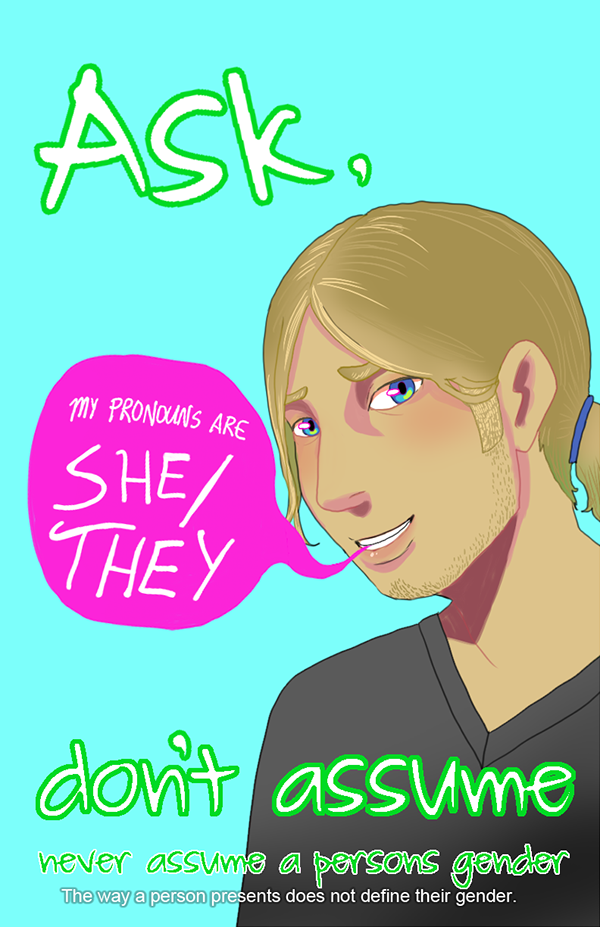Pronouns – What are they?

Earlier on this month we had a Skillshare, all about pronouns, identity and acceptance led by get2gether member, Peer Mentor and activist: Mairi! (a.k.a Elliot, she/ him). Read on for his blogpost all about pronouns!
A person’s identity is their own. Pronouns are being mentioned a lot recently – what are they? Pronouns are how we refer to one another. They are there to make individuals feel comfortable and secure in their gender identity.

“In my personal opinion, the best way to find out a person’s pronouns, is to just ask them directly. If you are ever unsure about a person’s pronouns then just ask! We are all human beings and it is okay to make mistakes.” Mairi

Next time you meet someone new, why not ask for their name and pronouns?
For example:
Mairi: Hi there! What is your name and your pronouns?
Ella: Hi! My name is Ella, and my pronouns are ‘she/they’. Thanks for asking!
Here are some examples of pronouns in sentences:
Mairi is a fantastic peer mentor. She makes sure that everyone feels safe. He also is brilliant at checking in with people and asking questions.
Ella has been working with get2gether for almost a year. They love their job. And she especially like interacting with members.
Finally, it is important to not assume someone’s gender based on their appearance. Somebody might dress in a masculine way and have short hair, for example, but it doesn’t mean that they identify as a man.
The key to understanding pronouns is sensitivity and compassion.
